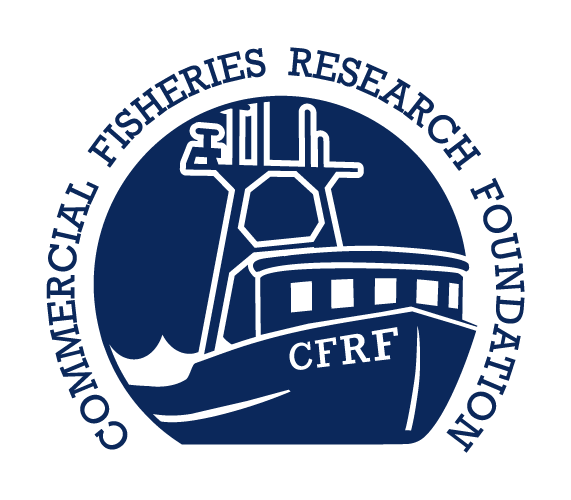Southern New England Cooperative Ventless Trap Survey
general description:
This project was a continuation of the Southern New England Ventless Trap Survey (SNECVTS) conducted in 2014/2015, which aimed to assess the seasonal distribution, movement, and habitat use of the American lobster and Jonah crab in the Cox’s Ledge Wind Energy Area. The study established a pre-construction baseline for lobster and Jonah crab populations to enable assessment and mitigation of the potential impacts of offshore wind energy development.
project goals:
Assess the seasonal distribution, movement, and habitat use of the American lobster (Homarus americanus) in the Cox's Ledge Wind Energy Area.
Assess the local distribution and habitat use of Jonah Crab (Cancer borealis), a species of emerging economic importance.
Project Team
Jeremy Collie, URI GSO
Anna Malek Mercer, CFRF
Christopher Glass, CFRF
Michael Long, CFRF
Joseph Langan, URI
Brian Hooker, BOEM Project Officer
data collection strategies:
SNECVTS was a collaborative project conducted in partnership with commercial lobstermen, who provided the platforms and background knowledge for the research. Twenty-four lease blocks in the RI/MA WEA were selected for the study, based on their potential for development of offshore wind energy (see map below). Biological sampling was conducted within each lease block two times per month from May to November 2018. Sampling was conducted with trawls consisting of 10 traps (6 ventless traps and 4 standard traps). Biological data was collected for lobsters, Jonah Crabs, and bycatch species. The habitat type at each sampling site was evaluated using a camera system.
Lobster and Jonah Crab Ventless Trap Survey:
24 stations (one trawl of 10 traps at each station) sampled twice per month, with a target soak time of 5 days
All individuals speciated and enumerated within each trap
Depth, bottom water temperature, wind speed, wind direction, and sea state recorded at each sampling station
Habitat video surveys conducted once per month to determine the bottom type at each sampling station
The following parameters were recorded for every lobster caught at each sampling station:
Sex
Size
Shell disease severity
Shell hardness
Egg state
V-notch status
Cull status
Mortality
Similarly, the following parameters were recorded for every Jonah crab caught at each sampling station:
Carapace width
Sex
Shell hardness
Egg state
Cull status
Mortality
Lobster Tagging Survey:
In conjunction with the ventless trap survey within the RI/MA wind energy area, a lobster tagging program was implemented to determine the seasonal movement patterns and habitat use of lobsters. From May - November 2018, 3,000 lobsters were tagged with t-bar tags that allow for monitoring of broad scale lobster movements. Additionally, 29 lobsters were equipped with acoustic tags that allow for more detailed, continuous tracking of lobster movements. Recoveries of tagged lobsters were made by sea sampling teams and monetary reward systems were in place to promote tag reporting by commercial lobstermen.
TAGGED LOBSTER REPORTING:
If you catch a tagged lobster, please contact Michael Long at mlong@cfrfoundation.org or call the CFRF office at (401) 515-4892. To view the SNECVTS tag reporting flyer, CLICK HERE.
If you catch a lobster with an acoustic tag, do not release the lobster! To retrieve data from lobsters with acoustic tags, CFRF staff will need to remove the tag from the lobster. You will also need to report the date and location of capture. Each acoustic tag returned to CFRF resulted in an immediate $100 reward.
To report a t-bar tagged lobster you must report the tag number, date and location of capture, and if the lobster was harvested or released. T-bar tag rewards will be awarded through a raffle system. Each t-bar tag reported resulted in one raffle entry, and three $100 raffle winners were selected at the end of the project.
project timeline:
March 2018: All sampling equipment and permits were prepared and all sea samplers and participant fishermen were trained in data collection protocols.
May-November 2018: Conducted ventless trap survey with biological sampling twice per month; Deployed lobster tags in conjunction with biological sampling; Carried out habitat surveys once per month; Classified habitat images and videos; Managed project database.
December-June 2019: Conducted data analysis; Prepared final report; Held meetings to share results and discuss next steps.
apply TO BE A PARTICIPANT F/V:
The application period for this project has closed, as of April 26, 2017. If you would like to submit an application for future consideration, please fill out the application and forward either via email, fax or mail to CFRF. To download the vessel application, CLICK HERE. To download the project briefing document, which outlines participant requirements and scope of work, CLICK HERE.
Media CoveRage:
"Cooperative Research Seeks to Fill in Data Gaps to Support Fisheries Science and Management Efforts" - ASMFC Fisheries Focus, February/March 2018
PAST EVENTS:
January 17 - 20, 2019: MA Lobstermen’s Association Annual Weekend & Trade Show, Hyannis, MA
January 16, 2019: American Fisheries Society Southern New England Chapter Winter Meeting, Storrs, CT





